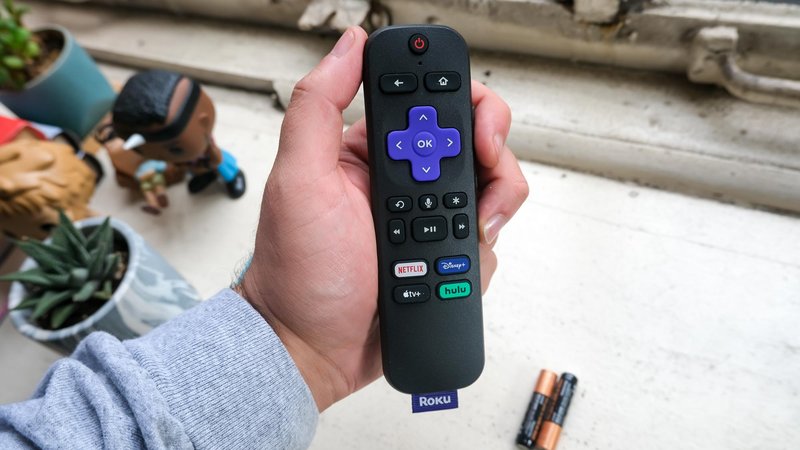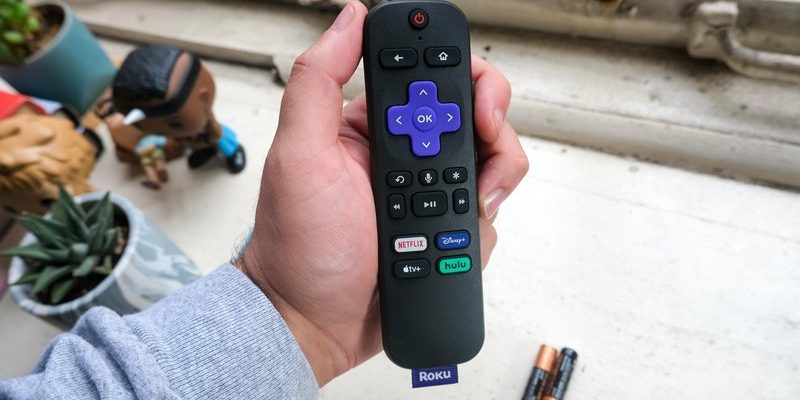
Here’s the thing: Roku remotes and their quirky codes can stump even the most tech-savvy. Whether you’re using the standard simple remote, the fancier voice remote, or even attempting to use a universal model from another brand, remote codes are supposed to help your remote talk to your device. But when that connection fizzles out, it feels like your TV night is doomed. Don’t worry — it’s usually fixable, and you don’t need a computer science degree or a three-year-old nephew to help. Let me walk you through what’s actually going on, and how you can get your Roku and remote code back on speaking terms.
Understanding How Roku Remote Codes Work
Okay, so what’s this “remote code” business anyway? Think of remote codes like secret handshakes between your Roku streaming box and its remote. The code is what makes the remote’s buttons actually do something on the screen — turn up the volume, scroll through apps, or blast that Netflix intro noise. If the secret handshake fails, your remote might as well be a fancy stick.
There are usually two types of remotes: the ones made specifically for Roku (original remotes), and universal remotes that can control lots of devices. With Roku-branded remotes, the “code” is often built-in — so unless something got scrambled, you don’t usually need to enter a code. But with universal remotes, you’ll enter a special number (the remote code) to link it to your Roku device.
You might be wondering why these codes even matter. Well, manufacturers like to make sure that pressing “power” on your remote doesn’t accidentally turn on your neighbor’s TV. So, each device and brand gets a unique code or pairing setup to keep the signals straight. When the code doesn’t work, it’s like trying to unlock your smartphone with someone else’s fingerprint. It just won’t budge.
Common Reasons Remote Codes Don’t Work
Honestly, when a Roku remote code refuses to play nice, it’s rarely random. There are a few usual suspects behind the drama. First off, if you’re using a universal remote, the code list (usually tucked in the remote’s manual or available online) might be outdated or missing your particular Roku model. That’s like showing up to a costume party in last year’s theme — awkward.
Another typical reason? Batteries running low or inserted the wrong way. It sounds silly, but trust me, I’ve spent too long cursing a remote only to find out the batteries just needed adjusting — or, you know, actually existing. If your Roku remote has a reset or pairing button (check under the battery cover), sometimes what it needs is a fresh start. Think of it as a hard reboot for those little circuits.
Lastly, interference from other household gadgets can play a role. Routers, microwaves, and even thick walls can block or confuse the signal between your remote and the streaming device. It’s like trying to have a conversation in a crowded, noisy restaurant — both sides are talking, but no one’s really listening.
Step-By-Step Troubleshooting for Non-Working Roku Remote Codes
Alright, time for action. Here’s a clear, beginner-friendly troubleshooting guide if your Roku remote code isn’t working — with no tech jargon, I promise.
- Check the Batteries: Pop the back off your remote, make sure the batteries are fresh and inserted correctly. I always keep a spare set in a drawer, just in case.
- Confirm You Have the Right Code: If you’re using a universal remote, double-check the code list. Look up your Roku model and remote brand online for the latest codes — sometimes, websites get updated after manuals are printed.
- Try Pairing or Resetting: Many Roku remotes have a tiny “pairing” button inside the battery compartment. Hold it down for five seconds near your Roku device. If your remote is more basic (no pairing button), try removing the batteries, unplugging your Roku for a minute, then plugging everything back in.
- Eliminate Interference: Move other electronics away from your Roku. Keep the device visible and don’t hide it behind your TV if using an infrared controller.
If none of this works, your remote might be the problem, not the code. At that point, using the Roku mobile app as a remote (yes — it’s free!) or considering a replacement could save you future headaches.
When to Use a Universal Remote and How to Sync Codes
You might be wondering if a universal remote is a good idea in the first place. Honestly, it can be — especially if you’re juggling more gadgets than you have hands. Universal remotes come with big benefits: one remote to rule them all, fewer lost clickers, and more control over your media cave.
But here’s the catch: getting a universal remote to work with your Roku streaming device usually means entering a 3- to 5-digit code. That code is what “teaches” the remote how to talk Roku’s language. If you don’t have the right code, your remote might end up controlling your ceiling fan or, worse, doing nothing at all.
When syncing, make sure you:
- Use updated code lists from the universal remote’s brand website.
- Follow instructions step-by-step; sometimes it’s as simple as holding a “setup” button and typing the code.
- If one code doesn’t work, try the next on the list — some models accept several codes.
If it feels like you’re entering secret passwords in Mission Impossible, you’re not alone. But once you get the right code synced, it’s pretty satisfying to control everything from one device.
Resetting and Re-Pairing Your Roku Remote
Sometimes, all your remote needs is a fresh start. Resetting or re-pairing your Roku remote is like hitting the relationship “reset” button when there’s been a misunderstanding. Here’s how to do it, step by step:
First, unplug your Roku streaming device from the power source for about 10 seconds, then plug it back in. While it’s booting up, press and hold the pairing button on your remote (it’s inside the battery compartment for most models). Hold until the pairing light starts flashing — this usually takes about 3–5 seconds, but sometimes it feels like an eternity if you’re impatient (guilty).
Keep your remote close to the Roku device. If the two are properly paired, you’ll see a message on your TV confirming the connection. If nothing happens, swap the batteries and try again. Sometimes the pairing sequence gets grumpy and needs a little patience.
Older remotes without a pairing button use a different process — usually just unplugging and replugging both devices, then trying the buttons again. If you’re still stuck, it might be time to try the mobile app or see if a replacement remote solves the issue.
Battery Issues and Physical Damage
It’s easy to overlook the basics, but batteries and physical damage are some of the most common culprits when remote codes stop working. Think about it: if the batteries are on their last legs, the remote can’t send a strong enough signal — so the Roku device never hears the “code.”
If changing batteries doesn’t help, look for visible signs of trouble. Did you spill coffee on the remote last week? (Don’t worry, it happens to the best of us.) Are any buttons stuck, or does the battery compartment look a little crusty or corroded? A little bit of corrosion can block the electrical contact, so gently clean it with a cotton swab and a tiny bit of vinegar or isopropyl alcohol — just be sure it’s bone dry before you put it back together.
If the remote rattles, has a cracked shell, or was dropped one too many times, it might be time to swap it out. Remotes aren’t exactly tanks, and sometimes a replacement is the fastest fix.
Troubleshooting with the Roku Mobile App
Here’s an honest confession: the Roku mobile app has saved me more than once when every other remote trick failed. It turns your smartphone into a remote for your streaming device, giving you all the basics — navigation, volume, and even voice search if your Roku supports it.
To use it, just download the official Roku app from the App Store or Google Play, then connect your phone to the same Wi-Fi network as your Roku streaming device. The app will usually find your device automatically. This workaround is a lifesaver when you’ve lost your remote or just can’t get the remote code to sync.
Is it a perfect long-term solution? Not for everyone. But if you don’t want to drop everything to buy a new remote — or got stuck mid-binge with a non-working code — it’s a handy option to have up your sleeve.
When It’s Time to Replace Your Roku Remote
Sometimes, you just reach the point where enough is enough. If your remote repeatedly fails to pair, codes don’t work even with fresh batteries, or it’s showing obvious signs of wear and tear, replacement might be your only real option.
Look for official Roku remotes online, or check if your streaming device supports certain universal brands. Double-check device compatibility before you buy — not all remotes play nicely with every Roku model. The good news? Roku remotes aren’t usually expensive, and a fresh one almost always solves nagging code or pairing issues.
If you’re trying to get by with a universal remote, and none of the provided codes work, it could be a compatibility issue. In that case, stick with the manufacturer’s recommendations, and when in doubt, go with the app until a new remote arrives. It’s better than wrestling with codes that just refuse to cooperate.
Final Thoughts: Getting You Back to Streaming Bliss
At the end of the day, a stubborn Roku remote code doesn’t have to derail your movie night. With a little patience, some fresh batteries, a good look at code lists, and the occasional reset or pairing ritual, you can usually get your remote – or at least a backup app – working in no time. It’s easy to get frustrated, but most issues aren’t permanent. And hey, worst case, a replacement remote is just a delivery away.
So the next time your Roku streaming device remote code doesn’t work, take a deep breath and walk through these steps. You’ll be back to your favorite shows — and maybe even feeling a bit like a tech wizard for solving it all yourself.
